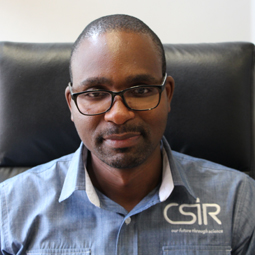Additional Renewable Energy Development Zones proposed for wind and solar PV
The second phase of the Strategic Environmental Assessment (SEA) for wind and solar photovoltaic (PV) energy in South Africa proposes three additional Renewable Energy Development Zones (REDZs) for wind and solar photovoltaic energy projects.
The REDZs support the responsible implementation of the Integrated Resource Plan (IRP 2019) that was recently gazetted by the Minister of Mineral Resources and Energy on 17 October 2019. Renewable energy projects that could be developed in these new REDZ have the potential to make significant contributions to mine rehabilitation and to support a just energy transition in the specified areas including where 12 GW of existing coal power stations are planned to be decommissioned by 2030.
The second phase of the Strategic Environmental Assessment (SEA) for wind and solar photovoltaic (PV) energy in South Africa proposes three additional Renewable Energy Development Zones (REDZs) for wind and solar photovoltaic energy projects.
The REDZs support the responsible implementation of the Integrated Resource Plan (IRP 2019) that was recently gazetted by the Minister of Mineral Resources and Energy on 17 October 2019. Renewable energy projects that could be developed in these new REDZ have the potential to make significant contributions to mine rehabilitation and to support a just energy transition in the specified areas including where 12 GW of existing coal power stations are planned to be decommissioned by 2030.
The IRP 2019 has identified the requirement for at least an additional 14.4 GW of wind and 6.0 GW of solar PV by 2030 amongst a range of other new-build capacity including coal, gas, imported hydro and storage. There is a distinct need for rehabilitating areas where existing coal power stations are expected to decommission and possibly repurposing these for a range of diverse economic activities including renewable energy deployment which can be “fast tracked” if within the new REDZs.
The outcomes of the second phase of the SEA for wind and solar PV energy in South Africa were presented to stakeholders at the CSIR, in Pretoria on 26th September 2019. This study was commissioned by the national Department of Environment, Fisheries and Forestry (DEFF). The two new REDZs for PV are in the Emalahleni and Klerksdorp areas and the third one, which focuses on wind energy, is located to the east of Beaufort West.
CSIR environmental scientist, Abulele Adams, conveyed that one of the main aims of the Phase 2 SEA was to identify previously mined areas close to the Gauteng area where the highest demand for energy is, in order to incentivise large-scale solar PV projects in this area. “In this way, the new renewable energy projects can contribute towards the rehabilitation of previously mined areas, support job creation in the areas, especially where there may be a decline in mining, and potentially make use of existing infrastructure, such as the electricity grid and roads from previous mining activities,” she explained. She further emphasised that it is important to plan renewable energy development in these previously mined areas to ensure that renewables play a role in the just transition to a low-carbon economy.
The identification of the new REDZs involved positive mapping (i.e. “pull factors”), which included factors such as the abundance of the existing wind and solar PV energy resources, access to the power corridors, and other technical criteria required for renewable energy facilities. This was followed by negative mapping (i.e. “push factors”), which included environmental features and areas that are sensitive to the placement of large-scale wind and solar PV facilities. Thereafter, an industry prioritisation exercise was conducted to ensure that the proposed areas are aligned with areas that the renewable energy sector identified as priorities for future projects.
CSIR environmental assessment practitioner, Paul Lochner, highlighted that renewable energy development can still take place outside of the REDZs. “Such applications must be considered on a project-by-project basis,” he explained. He added that the REDZs are also aligned with the powerline corridors that were identified in the Electricity Grid Infrastructure SEA completed in 2016 and gazetted as powerline corridors in February 2018. In this way, the combination of the REDZs and power corridors provides strategic guidance to Eskom on where to prioritise investment in grid infrastructure.
This Phase 2 SEA follows the Phase 1 Wind and Solar SEA (completed in 2015), which identified eight REDZs in South Africa. These were gazetted for implementation by the Minister of Environmental Affairs, in February 2018.
The objective of the SEAs is to identify areas in the country that are best suited for wind and solar PV energy projects, based on a holistic assessment of technical, strategic planning, environmental and socioeconomic criteria.
Issued by the Council for Scientific and Industrial Research (CSIR), in collaboration with the national Department of Environment, Forestry and Fisheries
For enquiries:
David Mandaha: CSIR Media Relations Manager
Tel:+27 (12) 841 3654/072 126 8910
Email: dmandaha@csir.co.za

overlayed onto the electricity grid infrastructure corridors where investment in transmission infrastructure is planned.


